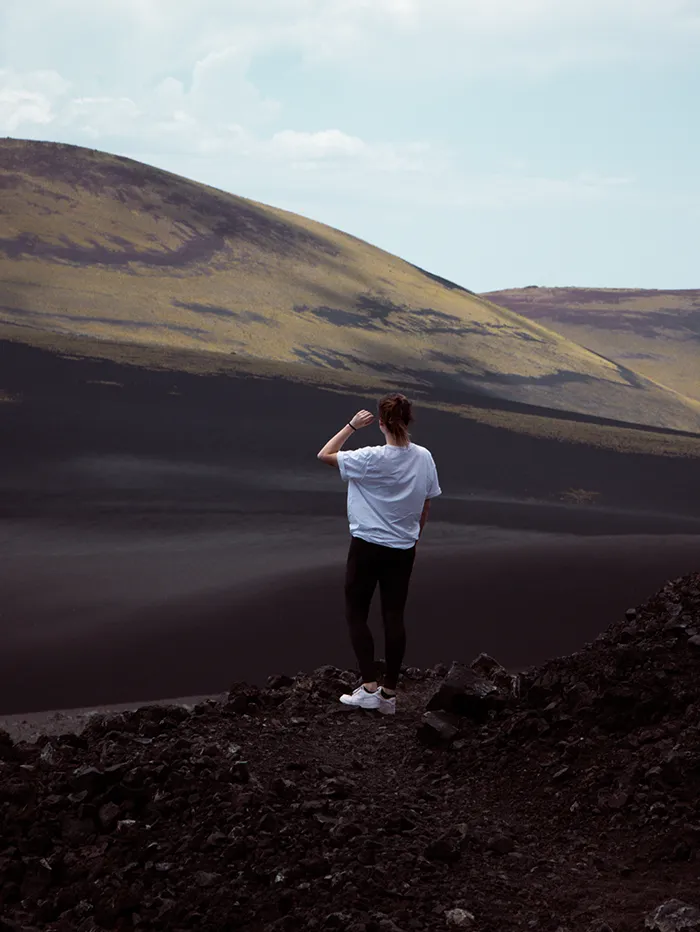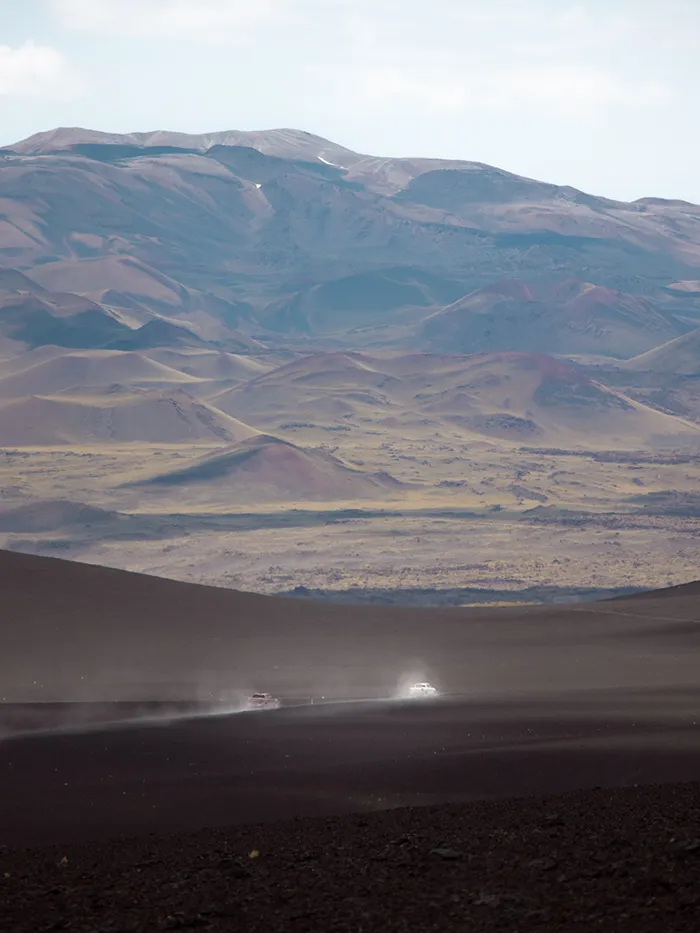Aconcagua is the highest peak outside of Asia and the true giant of both the Southern and Western Hemispheres.
We guess we could call it the roof of the Americas.
Standing tall at an impressive 6,961 meters (Everest stands just a bit higher at 8,849 m), this colossal mountain is part of the mighty Andes.
Still riding this -est wave, the Andes is the long-est continental mountain range in the world, stretching along the western coast of South America through a total of seven (yes, seven!) countries.
Aconcagua itself likely got its name from the Quechua dialect Ackon Cahuak, meaning Sentinel of Stone. The mountain has a rich history, playing a crucial role in the indigenous culture before becoming a beacon for climbers worldwide.
Fun fact: the first recorded successful summit was by Matthias Zurbriggen in 1897.
Know Before You Go
🎟️ Entrance to Aconcagua Provincial Park requires a permit, which must be purchased in advance and presented at the park. You can buy them online here.
🥾 The Horcones Lagoon trail is the only trail accessible to all visitors with the most basic 1-Day permit and is open year-round. High mountain trekking routes are usually open only from November 1st to April 30th (always depending on weather conditions) and require special permits.
☀️ It doesn’t matter if Mendoza has 35°C, Aconcagua Provincial Park will be colder as its elevations start over 2,000 meters higher than Mendoza City. Meteoblue is a great website to check weather conditions in the park before you go.
⛰️ If you’re going on any of the treks beside the Horcones Lagoon, high-quality climbing gear and warm clothing are must-haves, as conditions on the mountain can be extremely harsh.
Also read: What To Do in Mendoza – A Guide to Argentina’s Wine Capital
Getting to Aconcagua Provincial Park
The Aconcagua Provincial Park is located around 200 km from Mendoza City and there are two main ways to visit it on a day trip:
🚗 By Car: The road trip to Aconcagua ranks as one of the most breathtaking we have ever done! The road winds through the heart of the colossal Andes mountains and you feel like a small little human driving your small insignificant little car next to it. So freaking beautiful!
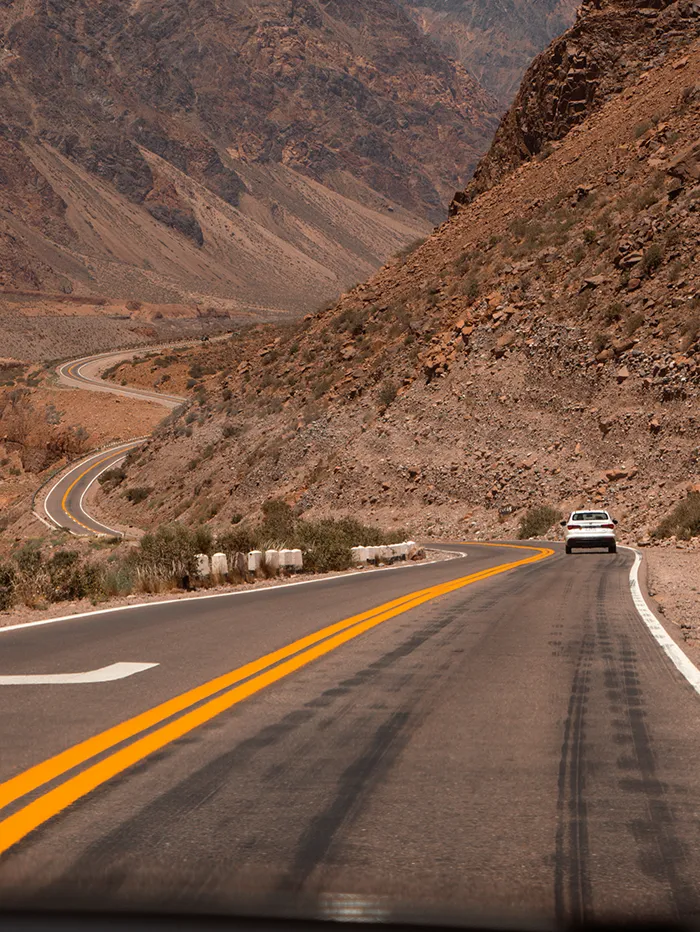
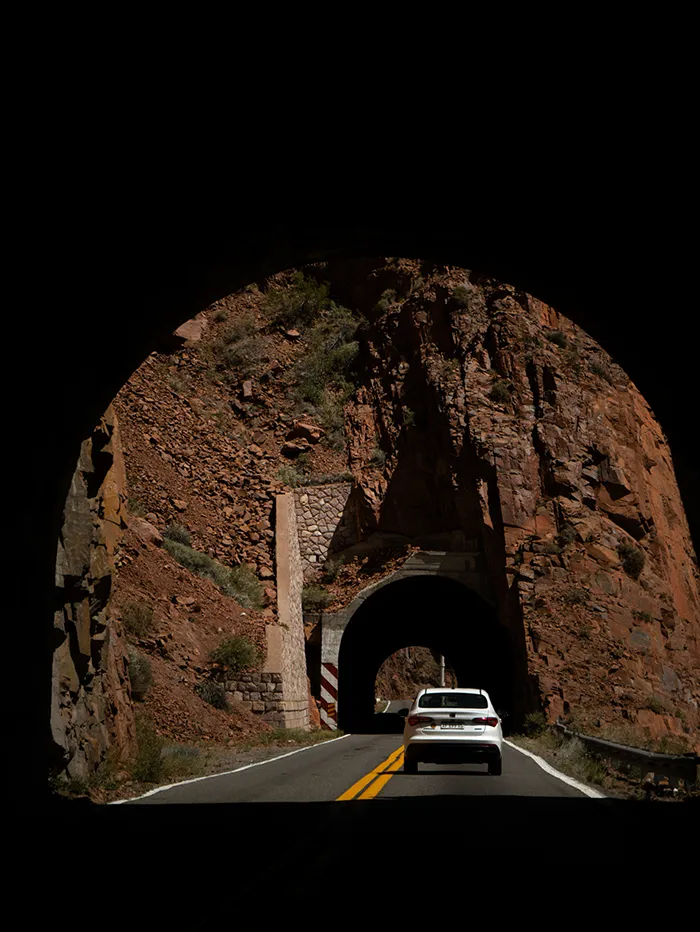
🚌 By Guided Tour: For those who prefer an organized experience, several tour companies in Mendoza offer day trips to Aconcagua. These tours often include transport, guides, meals, and sometimes even acclimatization days.
Important: If you’re looking for hiking or climbing expeditions, we recommend going with specialized companies – we’ll break them down later.
Also read: Mendoza Wine Tour: How to Choose the Best Wineries to Visit
Strategic Stops Along the Way
From Mendoza, reaching the park will take you about three hours. Along the way, you will find numerous scenic spots worth stopping. Here’s a breakdown of all of them, in order:
1️⃣ Lake Potrerillos: this man-made reservoir was constructed in the early 1990s and primarily designed to aid irrigation and hydroelectric power production. Nowadays, the lake is a very popular destination among locals and it’s where they go during the spring and summer months to swim, kayak, and enjoy a day by the water.
Hot tip: Instead of taking Route 7, visit the lake through the Cacheuta Spa route (R82). This way you’ll get the best view of the lake coming out of the Cacheuta tunnel.
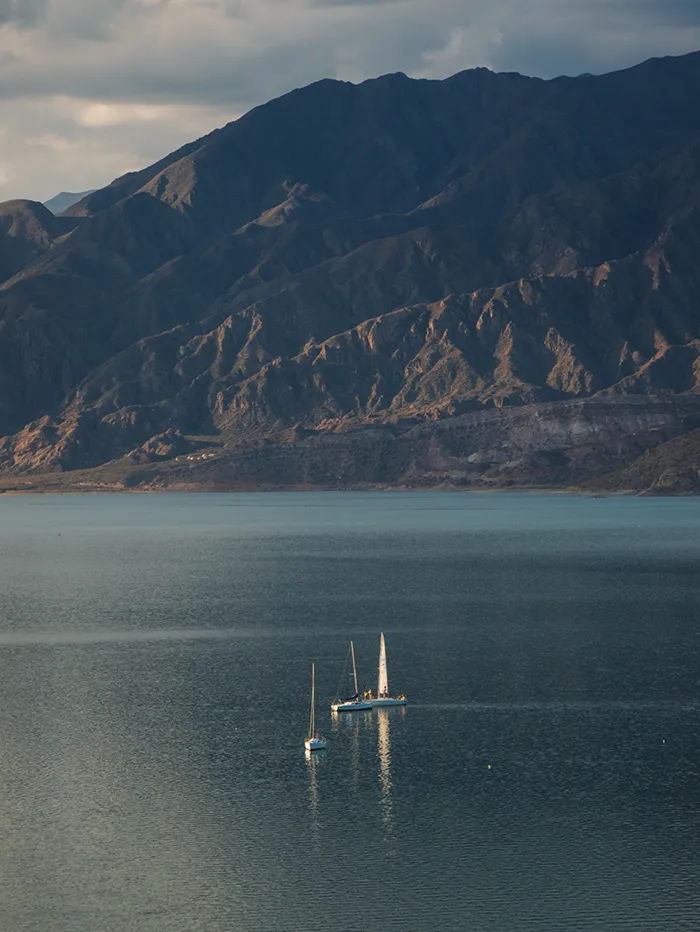
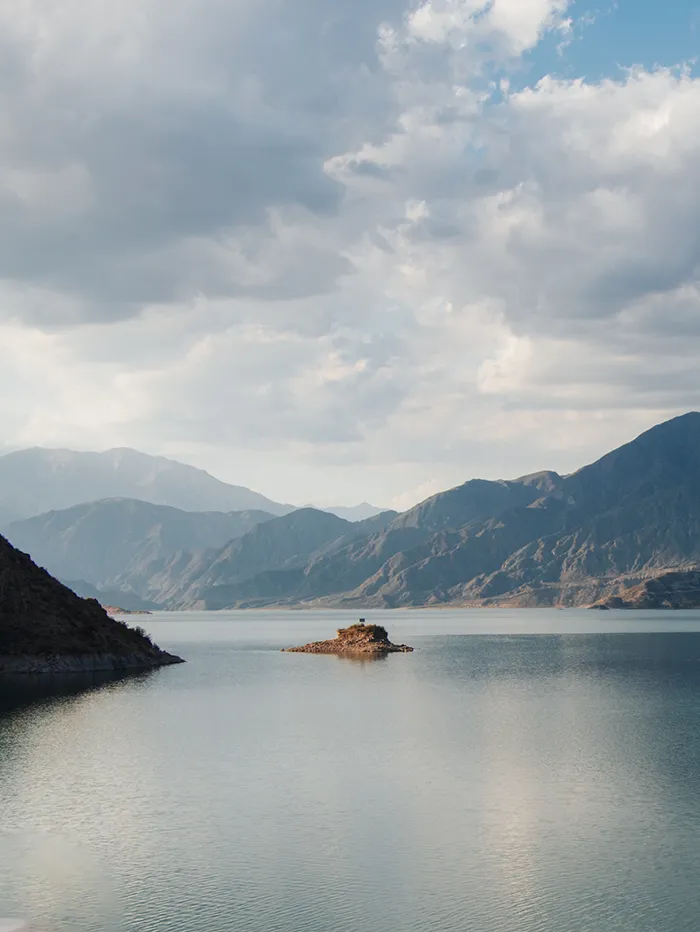
2️⃣ Uspallata Village: this small mountain village is the perfect strategic stop as it marks the middle of the journey to the Aconcagua Provincial Park. Stop for breakfast at Casita Suiza and get a couple of medialunas to go.
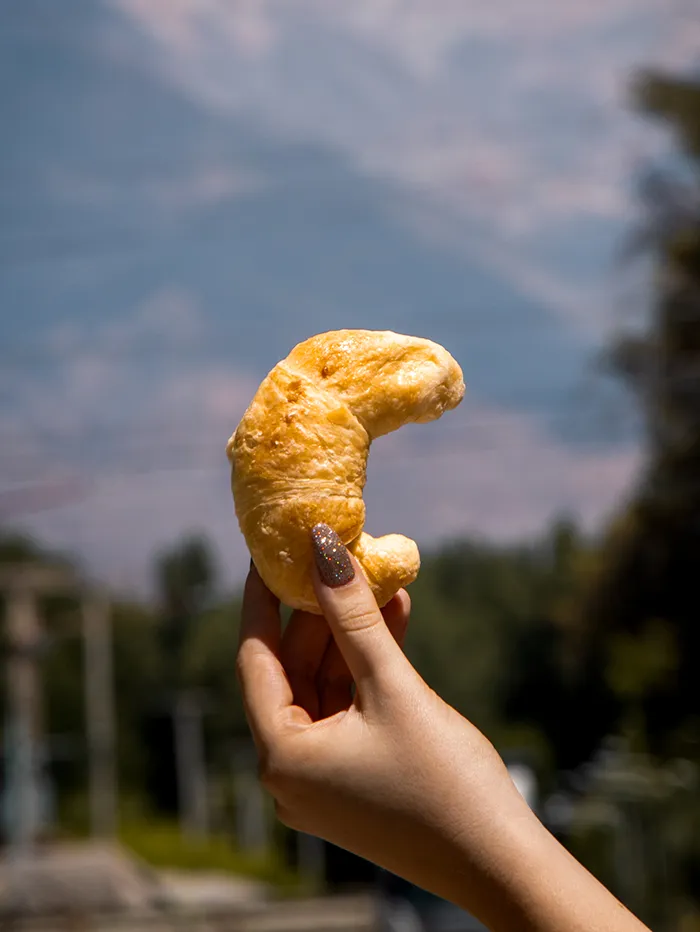
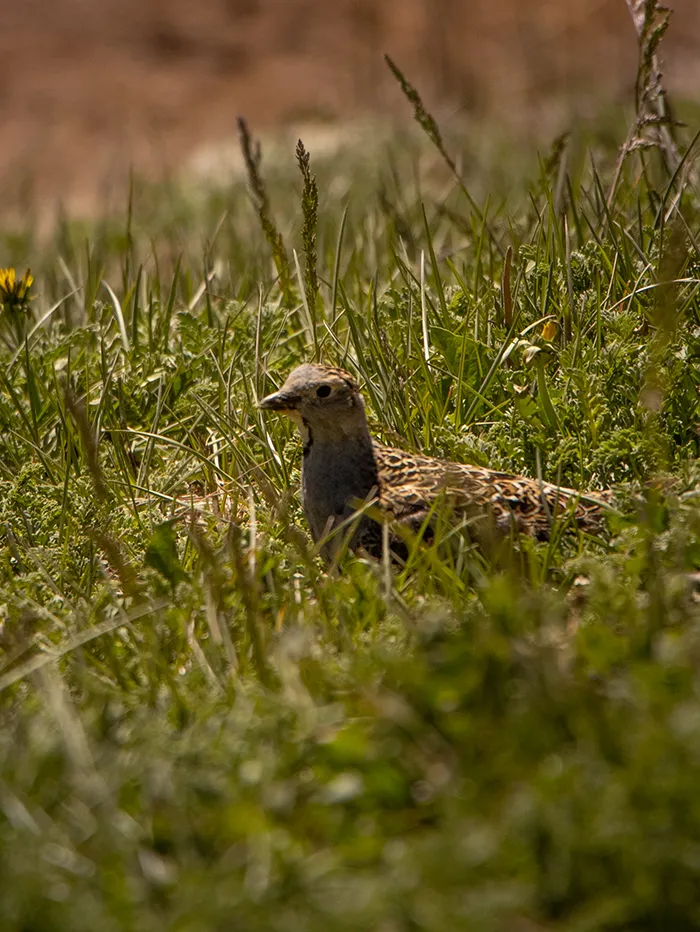
3️⃣ Puente del Inca: a natural arch that forms a bridge over the Las Cuevas River. Over centuries, the waters of this river, rich in sulfurous content, deposited sediment that eventually hardened into the bridge-like structure we see today. The natural bridge was used by the Incas as part of their road system, hence its name.
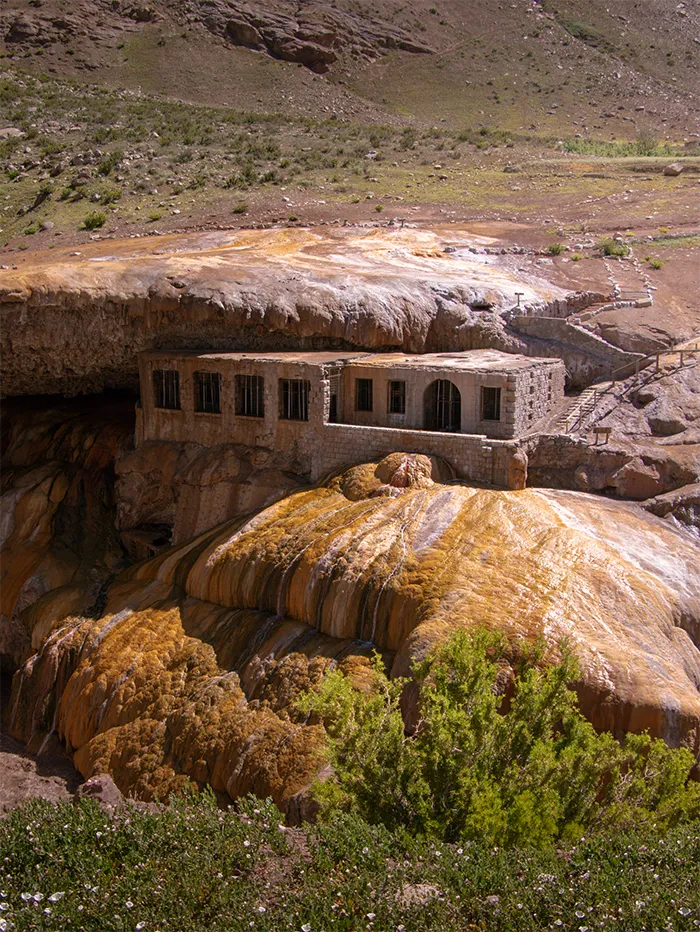
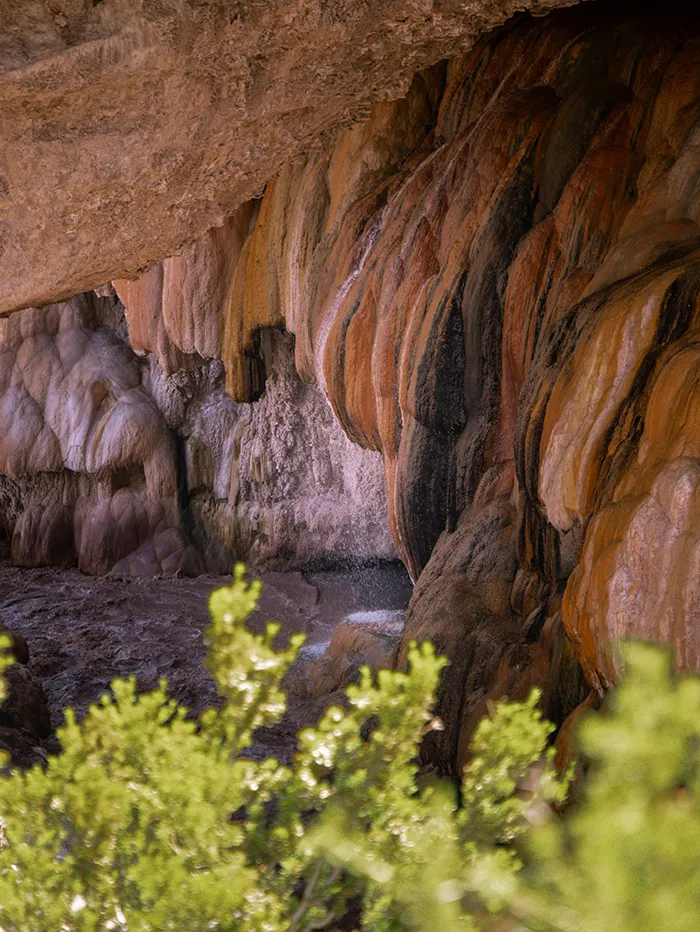
Fun fact: In the early 20th century, a thermal resort and spa were built at the site, capitalizing on the mineral-rich waters believed to have healing properties. Though the hotel is no longer operational due to an avalanche that destroyed it in 1965, the ruins add an eerie charm to the site.
A tiny village filled with local artisan shops is next to the bridge and it’s the cutest little thing! Take some cash with you as some shops don’t accept cards.
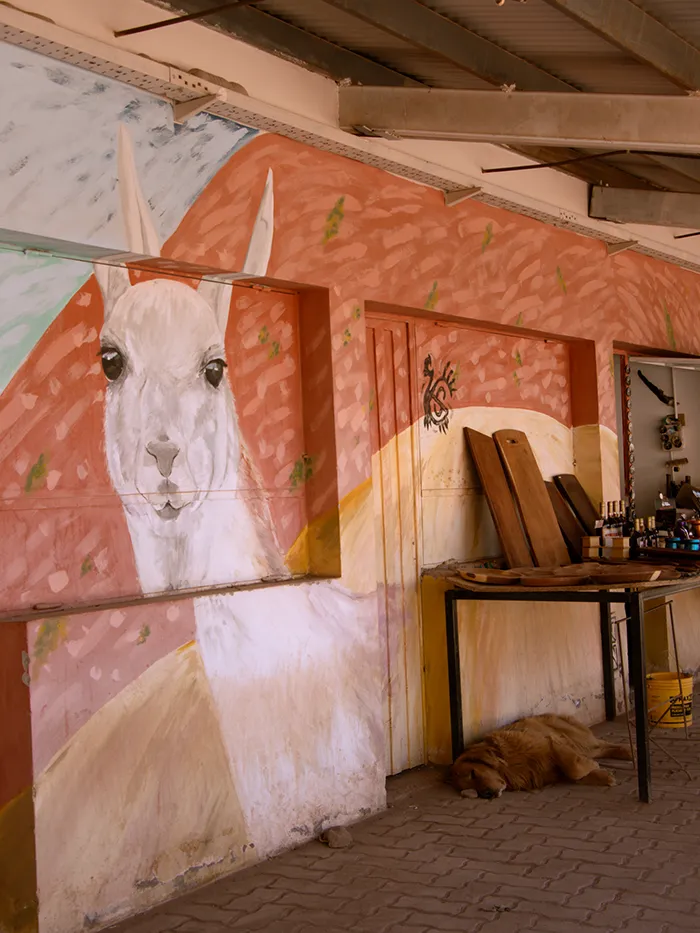
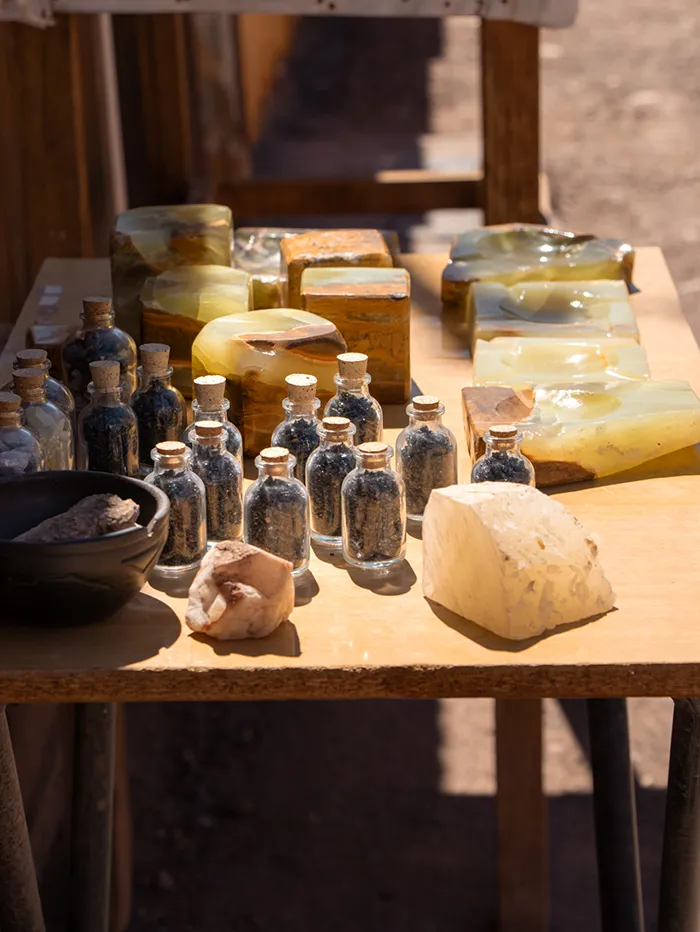
After your visit to Aconcagua, if you still have time:
4️⃣ Christ the Redeemer of the Andes: a viewpoint right at the border of Argentina and Chile that hosts the statue of Christ the Redeemer. The path up there is a challenging dirt road – if you make it to the top, you can go down via Chile and then go back to Argentina by crossing the Christ the Redeemer Tunnel.
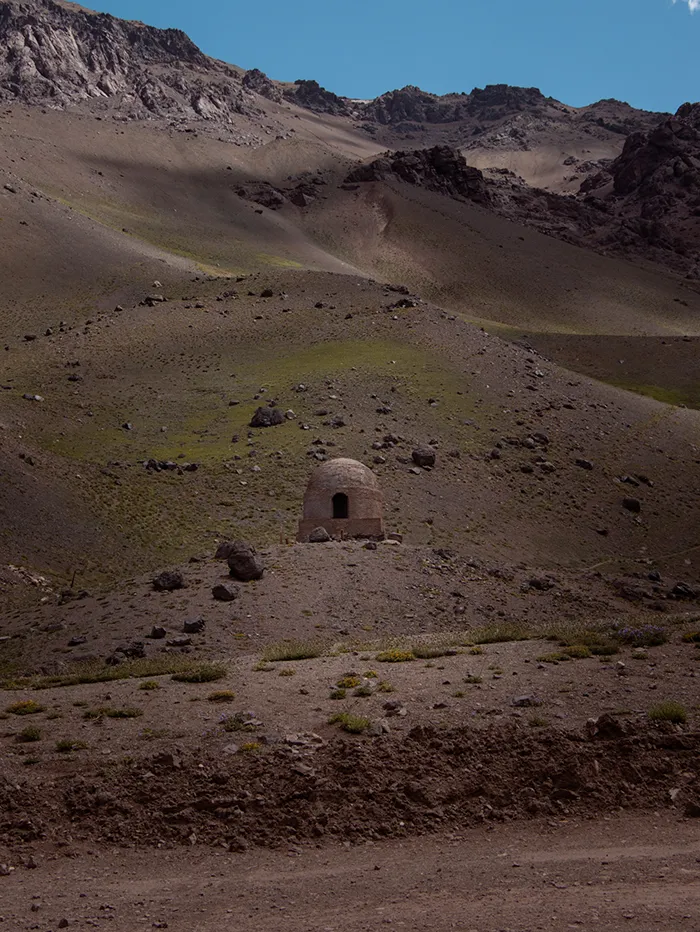
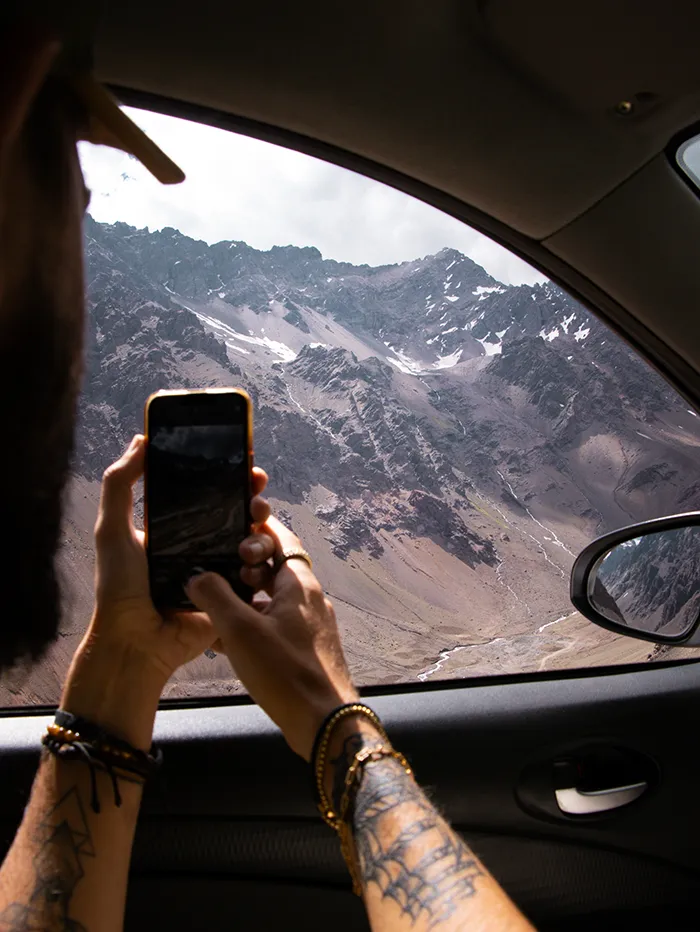
Note: the dirt road conditions are better and it is much faster to go up via the Argentinian side, taking about 30-40 minutes.
Also read: The Ultimate Guide to Malargüe – Argentina’s Real Hidden Gem
The Aconcagua Provincial Park
The Aconcagua Provincial Park hosts a number of viewpoints and moderate hikes for all fitness levels – from the “I just want a photo by the mountain” to the peak expedition level. Let’s break them down!
Note: each of the treks described below will cost you a different permit fee. You can find the most updated fee chart here.
1-Day Visit
1-Hour Walk – Horcones Circuit: the only trail accessible to all visitors with the most basic 1-Day permit and open year-round. The trail is mostly flat and the highlights are the Horcones Lake and the Aconcagua viewpoint. Along the way, informative boards explain the park’s fascinating geology.
4-Hour Hike to Confluencia Base Camp: Ready for a bit more adventure? The hike to Confluencia Base Camp is a well-marked trail that takes you through a stunning valley of red rocks. It is only available from November 1st to April 30th and no camping is allowed.
Important: Altitude can cause headaches, so take it slow to avoid discomfort. For multi-day hikes, arrive a day early to acclimatize to the altitude.
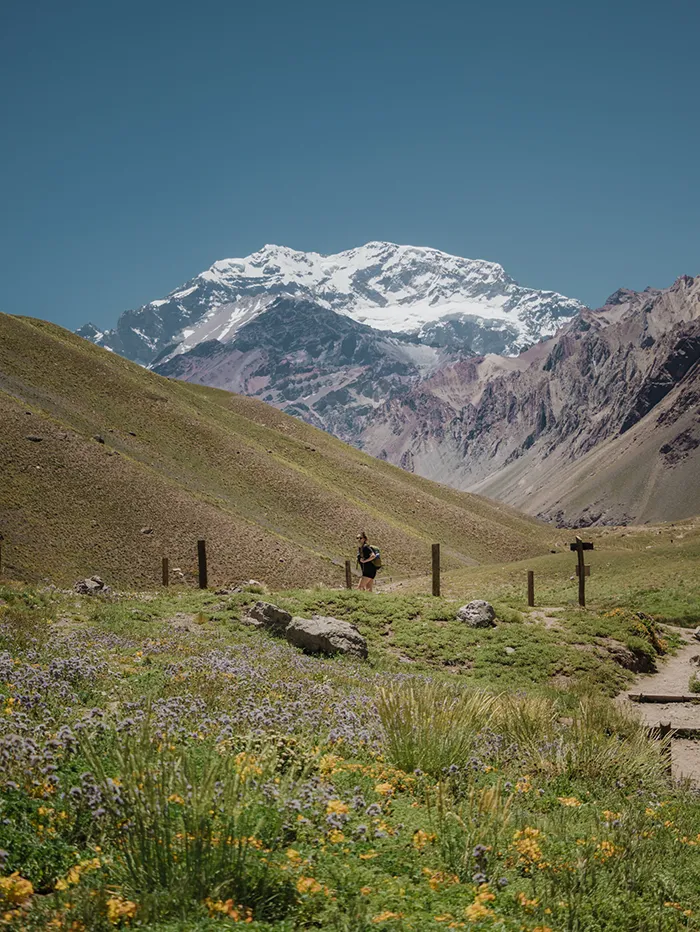
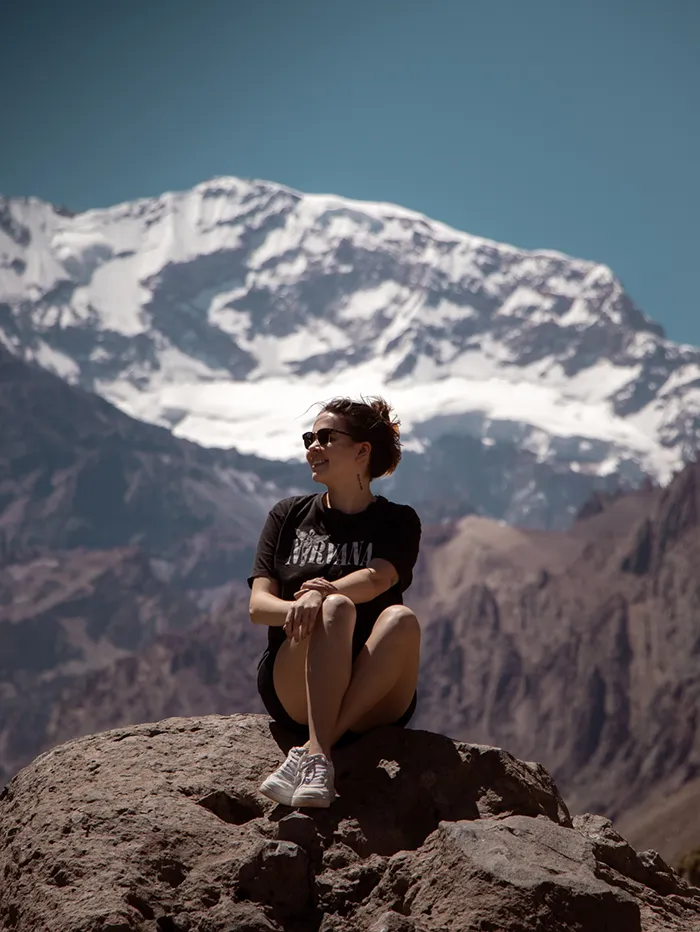
3-Day Trek to Plaza Francia
This is the closest you’ll get to Aconcagua if you’re not an advanced climber but have a good enough fitness level to take on long hikes. Plaza Francia is located around 3 hours up from the Confluencia Base Camp.
The permit for this trek is available from November 15th to April 28th with or without the assistance of a licensed guide/agency.
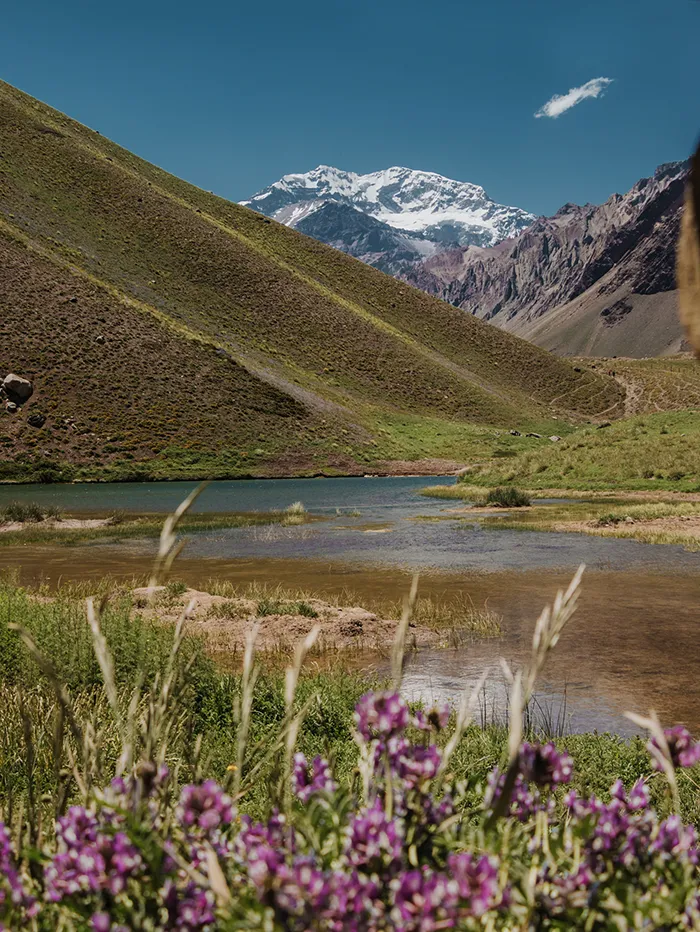
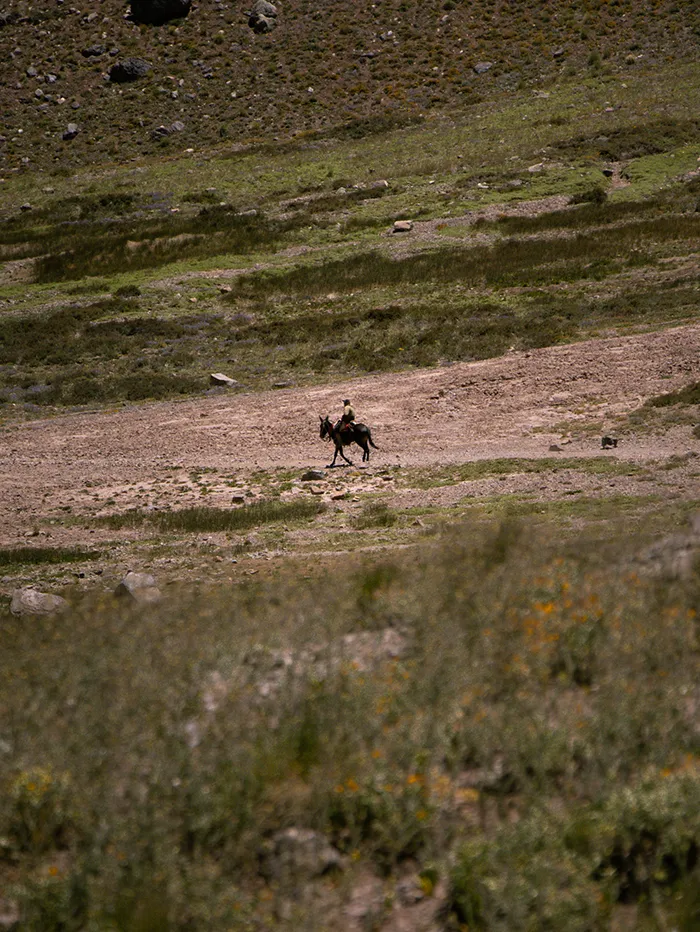
5 to 7-Day Trek to Plaza Francia and Plaza de Mulas
This extended trek covers all the main sights in the park. It includes a day to Confluencia Base Camp, a day to Plaza Francia and back, and another day to Plaza de Mulas, with a day of rest in between.
The permit for this trek is available from November 15th to February 28th with or without the assistance of a licensed guide/agency and requires evacuation coverage.
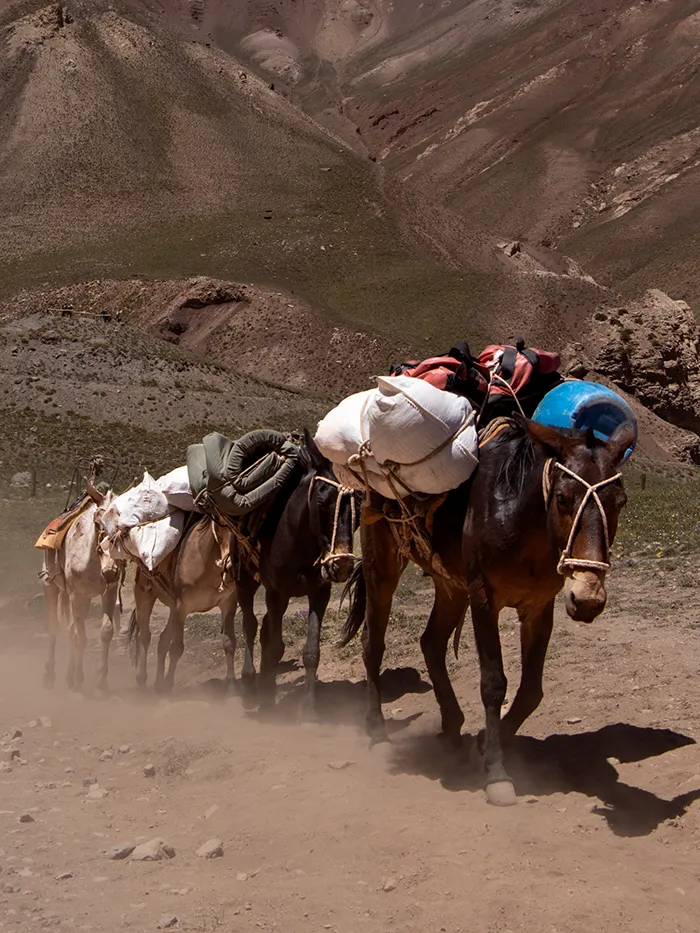
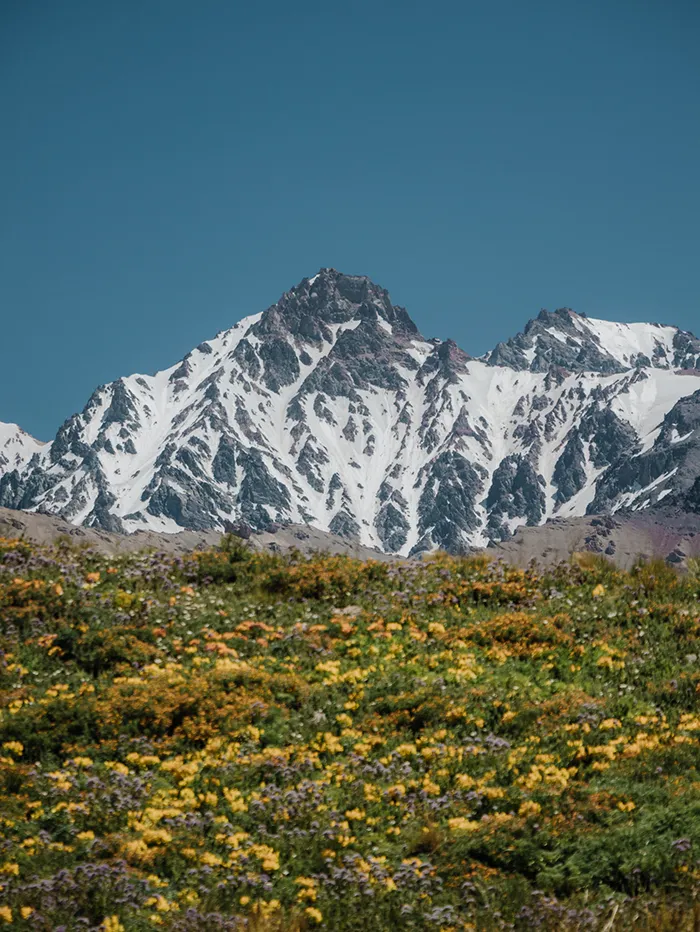
20-Day Ascent Expedition
If you’re an experienced climber, a mountaineer, or have a great fitness level and the summit is your thing, joining a guided hiking tour is a must.
Note: We are none of the above so we didn’t attempt the summit. From our research, some of the best-reviewed agencies are Aconcagua Expeditions, Elite Exped, and AMG.
You can usually choose between the following routes to the summit:
Normal Route: the most popular and direct route with shorter camp transitions (3-4 hours). Climbers spend 8 of 16 nights at base camps in Confluencia and Plaza de Mulas. Includes porter support and an acclimatization hike. Non-technical, with high summit success due to quality camps and ample acclimatization.
Polish Traverse 360 Route: this challenging route circles Aconcagua, ascending from the east and descending via the Normal Route. Camp transitions are longer (5-7 hours), offering varied terrain and views. Climbing the Polish Glacier requires technical ice and snow climbing skills.
The permit for ascent is available from November 15th to February 24th with or without the assistance of a licensed guide/agency and requires evacuation coverage.
Tip: for all of the treks above, it’s advisable to get your permit a few days before heading to the park to avoid any last-minute issues.
🎟️ Permits to Aconcagua Provincial Park can be purchased online here but also in person at the Dirección de Recursos Naturales Renovables building from Monday to Friday only during the morning (location here).
The validity of the permit starts on the date you enter the Park, which will be written on the permit at the checkpoint in Horcones or Pampa de Leñas.
Also read: Discover San Rafael, Mendoza: The Ultimate Top 10 Things to Do
Keep exploring the Andes
For a bit of context, the Andes were primarily formed by the oceanic Nazca tectonic plate going beneath the continental South American Plate.
Due to this subduction, the Andes are notably volcanic, which contributes to the mountain range’s continuing growth (it grows around 1 cm a year!). The high volcanic activity is also responsible for the rich mineral deposits in the mountain range, which include copper, silver, and gold.
Fun fact: If the Andes didn’t exist, South America’s climate would be drastically different. Without these towering mountains blocking moist air from the Atlantic, the Amazon rainforest would not be the lush paradise we know today. Instead, it would resemble a savannah or semi-arid steppe.
If you want to keep exploring the magic area that surrounds the Andes, we can’t recommend a visit to Payunia Reserve enough! This vast volcanic field with over 800 volcanic cones is one of the most amazing places we’ve ever visited.
Read here: How to Visit La Payunia – The Land of Volcanoes
